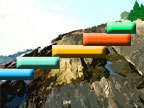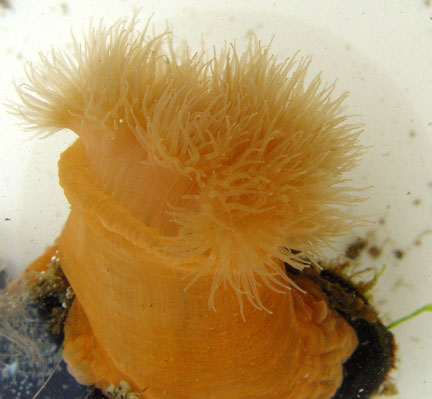 |
 |
|||||||||||||||
|
Sea anemones (ah-nem-ah-nee) can be found in the lower intertidal and in deeper subtidal areas. If you are searching for anemones you'll want to look under rock overhangs and in moist, shaded crevices during a very low tide. The frilled anemone pictured above is the most common anemone found on Maine's shores. They can be white, orange, or brown and varying shades of these colors. While anemones look like flowers, they are actually a carnivorous animal. The frilly tentacles are sticky and loaded with stinging cells known as nematocysts. Anemones will eat small fish and crustaceans that get stuck in the grip of their tentacles. When disturbed, anemones will retract their tentacles becoming just a soft blob on a rock. Anemones attach to the substrate using a basal or pedal disc. This broad, foot-like base keeps the anemone attached, however an anemone can move short distances at will by pulling up its basal disc and creeping or swimming in a clumsy manner to a new spot. Reproduction occurs by separate sexes. The eggs or sperm are ejected through the mouth. The fertilized egg develops and settles down to grow into a single anemone. Asexually they can reproduce by breaking off small portions of their basal disc which regenerate into a small anemone. |
||||||||||||||||
|
||||||||||||||||
|
||||||||||||||||

